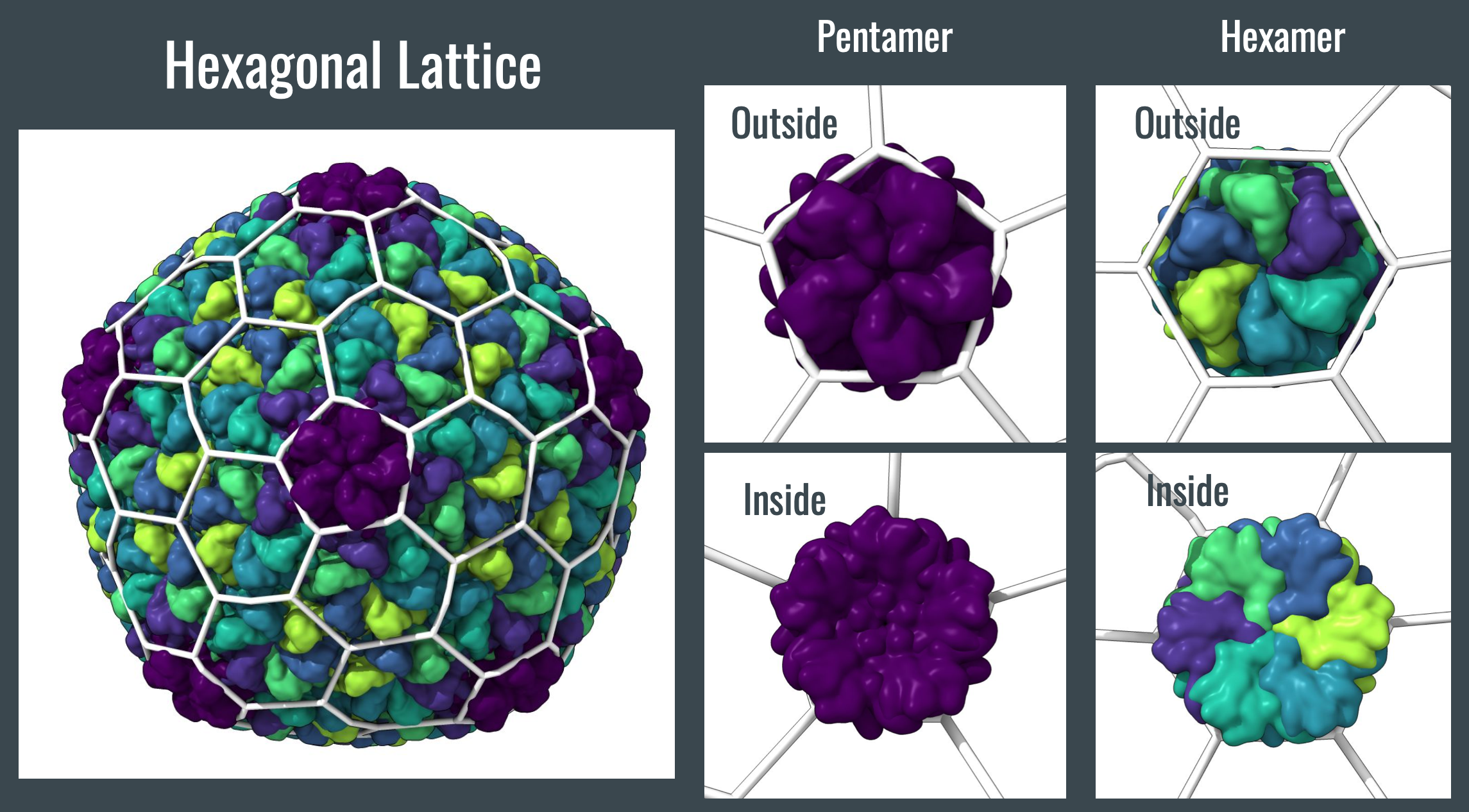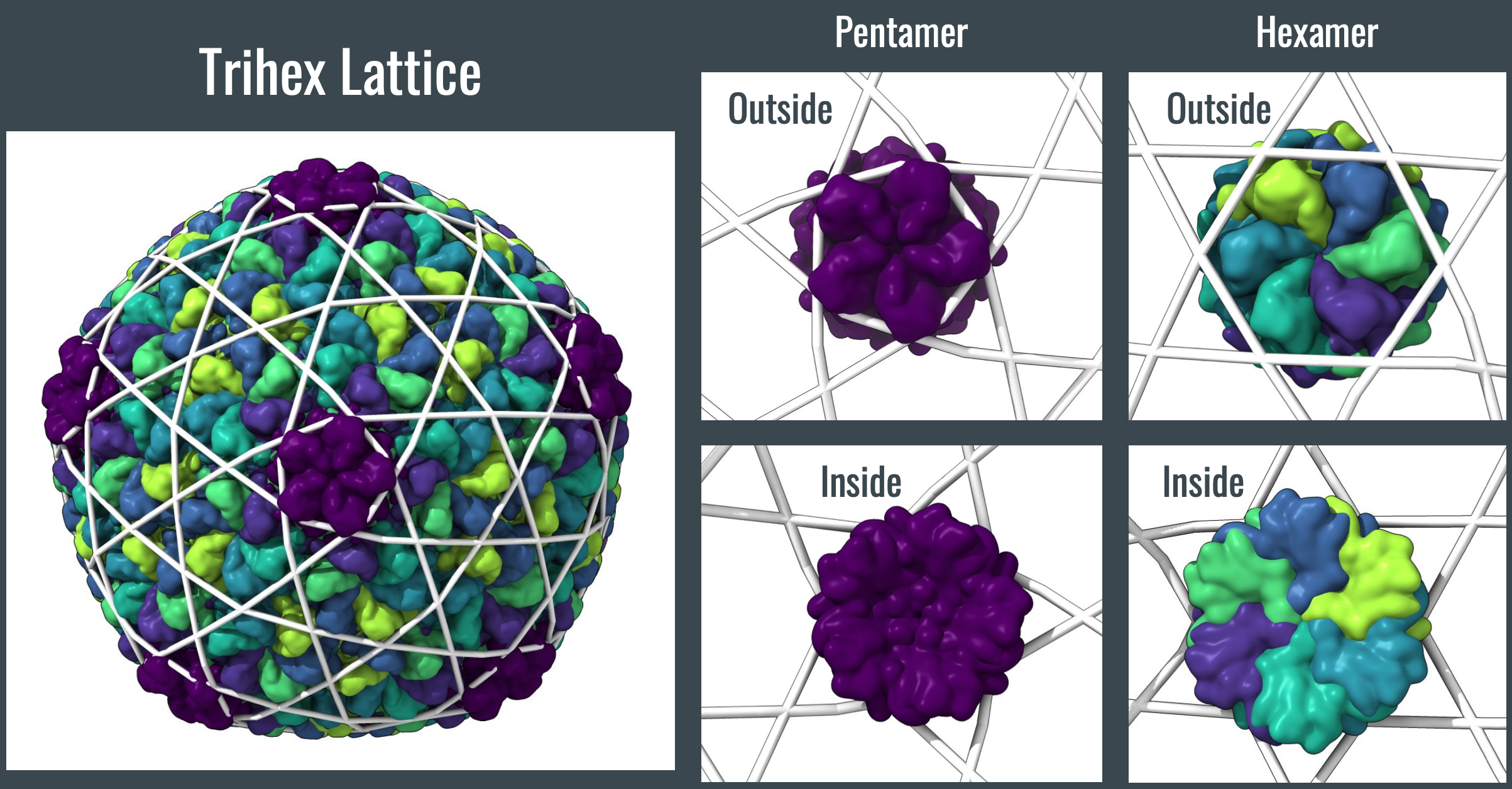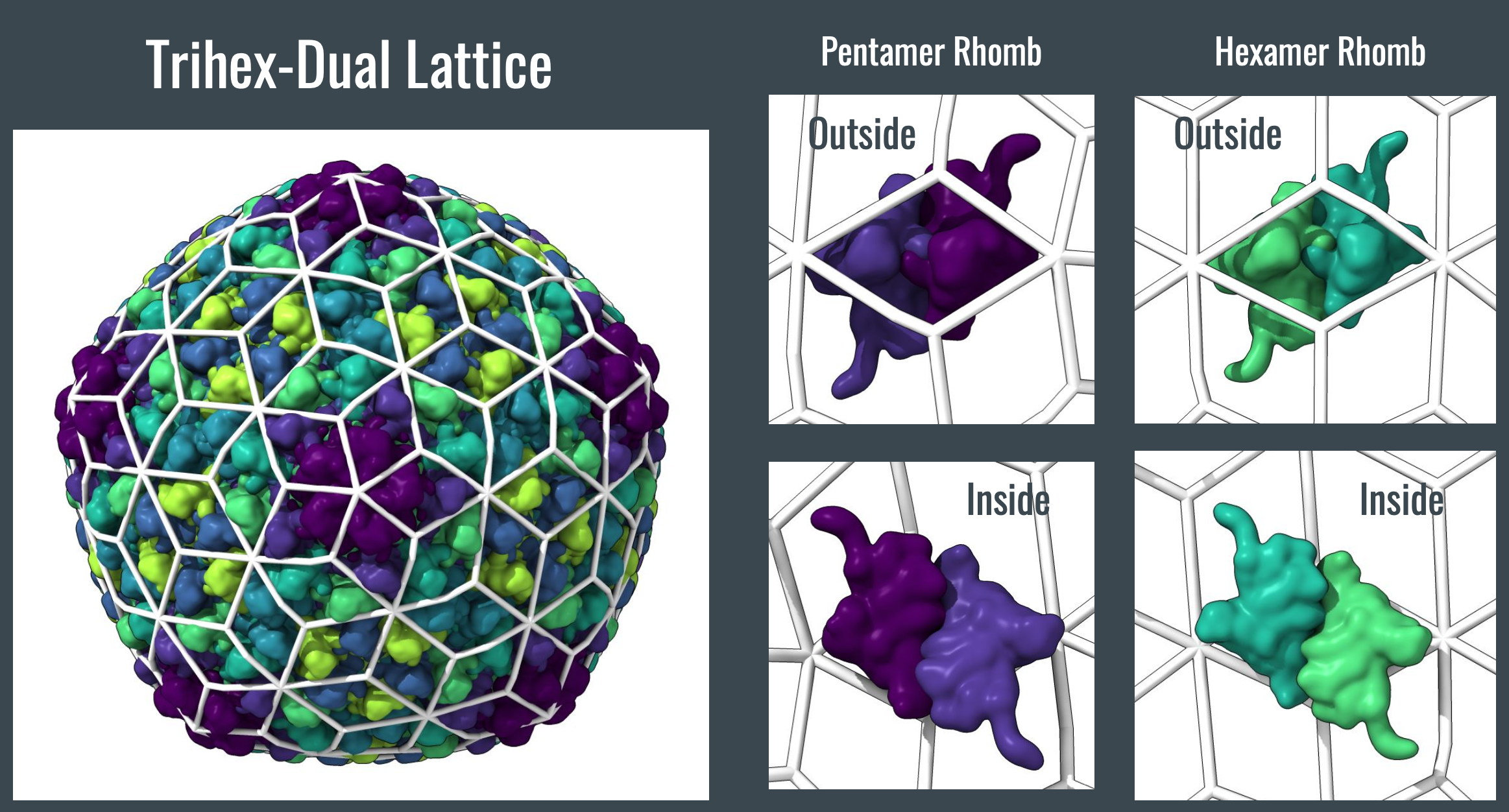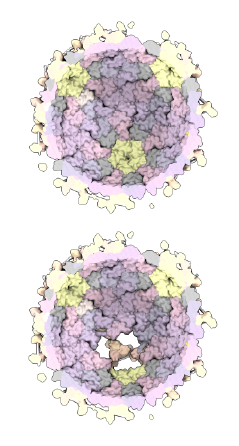Capsid Geometrical Anatomy (Luque lab)
October 27, 2021
Zoom session
Access to workshop files
- Folder in the Athena GitHub repo.
- Online content provided by GitHub pages is based on the standard lab’s public documentation system.
- Our approach to share knowledge steams from our Athena initiative.
Temporary Athena site for the Capsid Anatomy project:
- GitHub research repo: https://github.com/luquelab/auto-lattice
- Accessible online site: https://luquelab.github.io/auto-lattice
Part 1: Capsid anatomy
Capsid molecular composition
- Stoichiometry: Major capsid, minor capsid, scaffold, reinforcemen, and decoration proteins.
- Functions other than major capsid protein are usually fuzzy!
Capsid physical properties
- Diameter, surface, volume, and sphericity (internal and external).
- Chimera: Icosahedron surface.
- Elasticity and brittleness.
- No standard approach.
Capsid geometric architecture
- T-number and icosahedral lattice; Q-number for elongated structures.
- Generalized T-numbers: Twarock and Luque, Nature Communications, 2019.
- Chimera X: hkcage command and hkcage bundle.
- First used in Luque et al. Microorganisms, 2020.
How to assign T-numbers
Molecular approach: Correspondence between geometric tiles and protein clusters.
- Example: Bacteriophage P22 (PDB 5uu5)
-
Observation: Challenge assigning minor capsid protein function:
-
-
Observation: The HK97-fold sliding hypothesis:
-
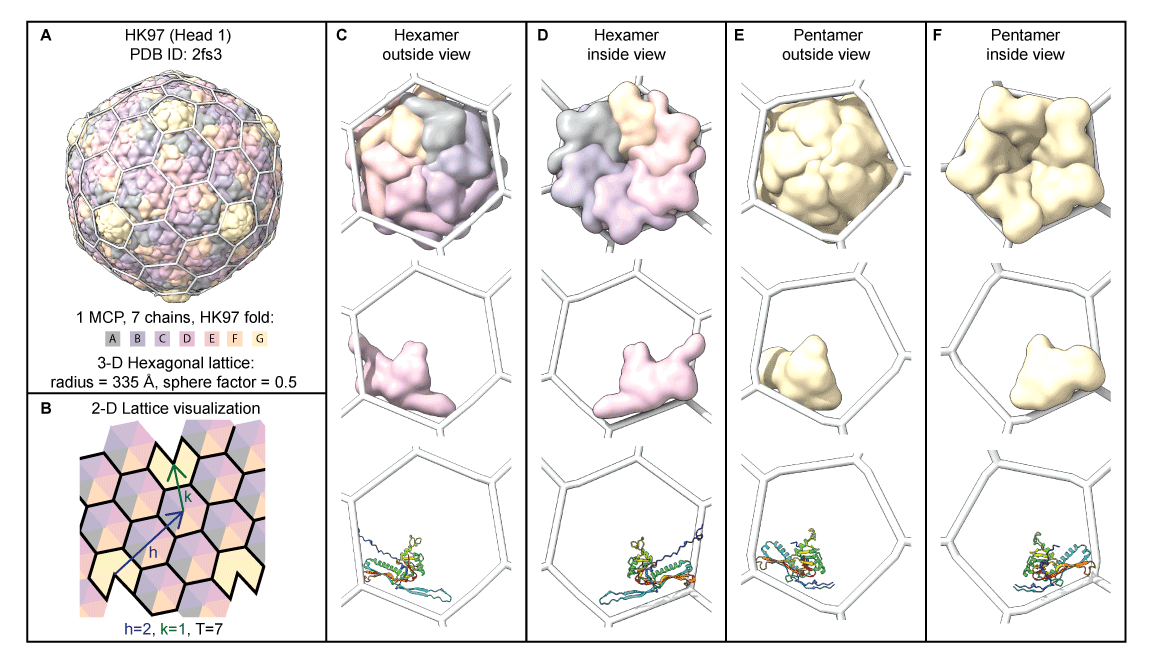
-
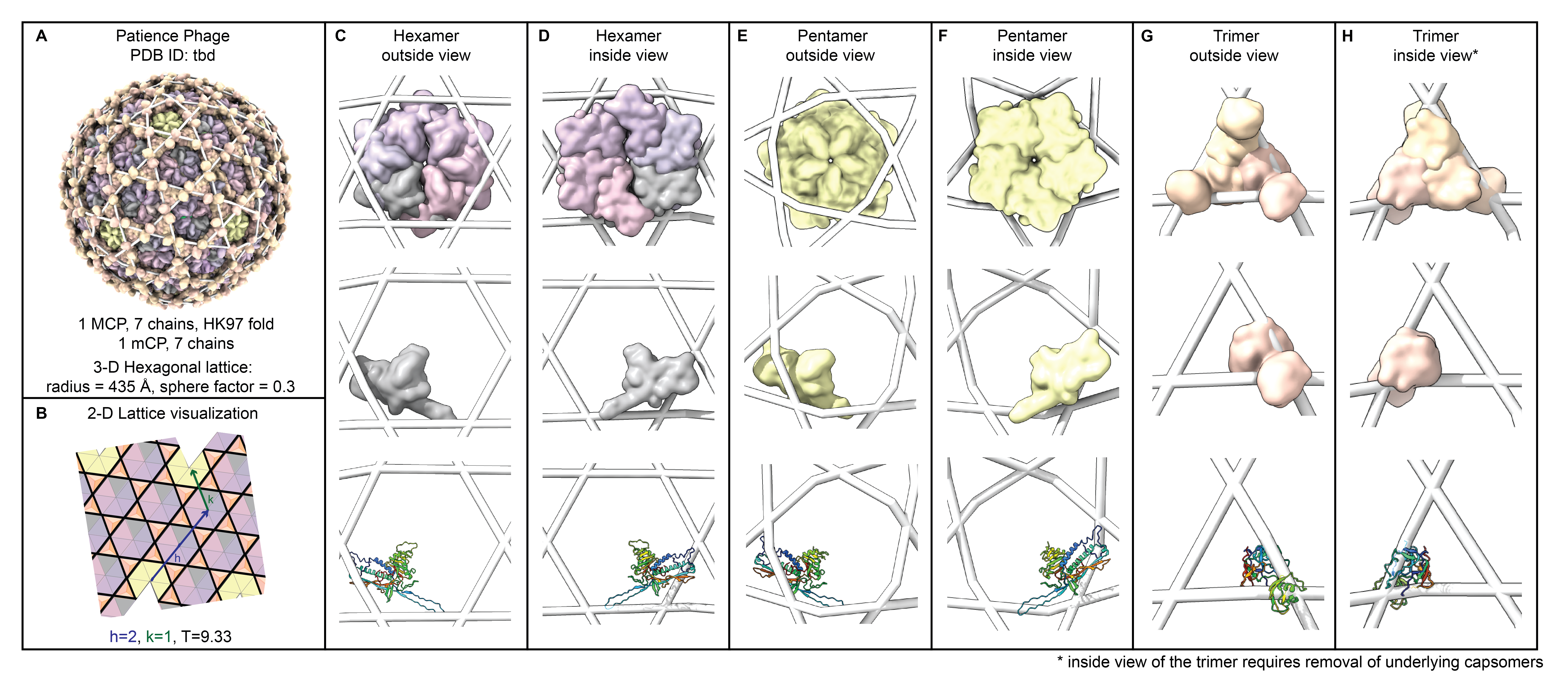
-
More examples in https://luquelab.github.io/auto-lattice/output/.
-
Mechanical approach: Correspondence between quasi-rigid regions and geometrical tiles.
- Elastic analysis of capsids
- Perturbation analysis of alpha-carbon capsid models.
- Example: Small tobacco necrosis virus (PDB 1A34):

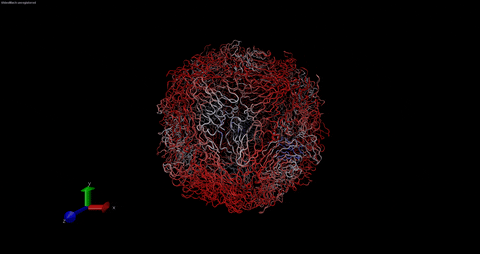
- Computational challenge: large capsids.
